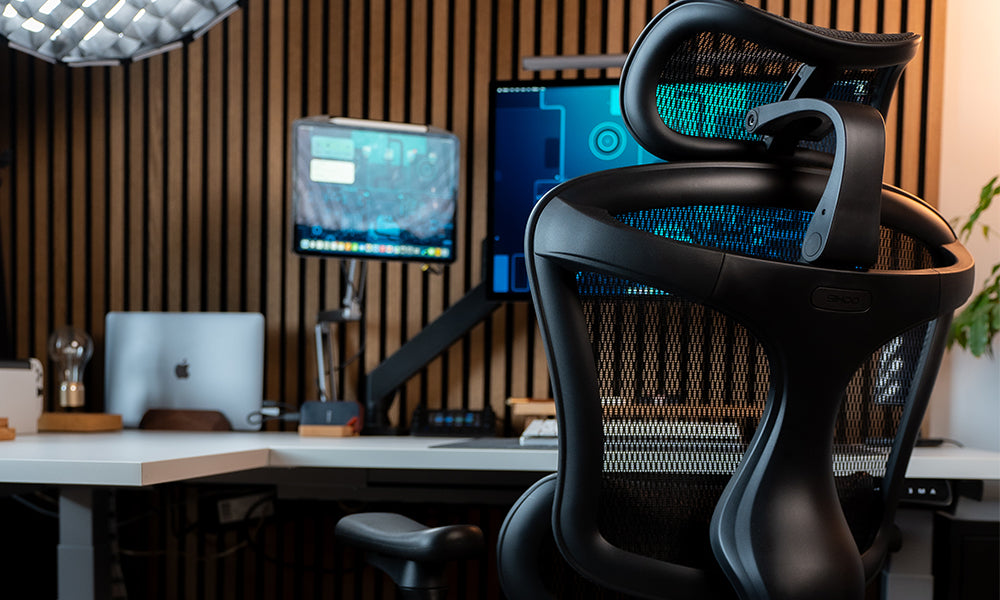Maintaining a healthy back is crucial, especially in today’s sedentary lifestyle. Whether you're working from home, in an office, or even studying, prolonged sitting can lead to back pain and discomfort. However, there are several strategies you can implement to strengthen your back while sitting, ensuring long-term spinal health and reducing the risk of back-related issues.
Adopt Proper Sitting Posture
The foundation of a healthy back while sitting starts with good posture. Here's how to sit properly:
- Sit Back in Your Chair: Ensure your back is fully supported by the backrest of your chair. Avoid perching on the edge.
- Feet Flat on the Floor: Keep your feet flat on the ground or on a footrest, with your knees at a 90-degree angle.
- Adjust Your Chair: Your chair should be at a height where your elbows are at a 90-degree angle when typing. The chair's backrest should support the natural curve of your spine.
- Keep Your Shoulders Relaxed: Avoid hunching or raising your shoulders. Keep them relaxed and aligned with your ears.
Use Ergonomic Furniture
Investing in ergonomic furniture can make a significant difference in your sitting experience:
- Ergonomic Chairs: These chairs are designed to support your back’s natural curvature and reduce strain. Features like adjustable lumbar support, seat depth, and armrests help in customizing the chair to fit your body.
- Lumbar Cushions: If an ergonomic chair isn’t an option, lumbar cushions can provide additional support to your lower back, promoting better posture.
Strengthening Exercises
Incorporate these exercises into your daily routine to strengthen your back muscles while sitting:
- Seated Torso Twist: Sit up straight with your feet flat on the floor. Twist your torso to the right, placing your left hand on your right knee and your right hand on the back of the chair. Hold for 10 seconds, then repeat on the other side. This exercise helps to stretch and strengthen your back muscles.
- Seated Leg Raises: Sit with your back straight and your feet flat on the floor. Lift one leg up, keeping it straight, and hold for a few seconds before lowering it. Repeat with the other leg. This helps strengthen your lower back and core muscles.
- Chair Planks: Sit on the edge of your chair with your feet flat on the floor. Place your hands on the armrests or the sides of the chair. Lift your body slightly off the chair, holding your core tight, and maintain this position for a few seconds before lowering yourself back down. This exercise targets your core and back muscles.
Stretch Regularly
Stretching can help alleviate tension and strengthen your back:
- Seated Forward Bend: Sit on the edge of your chair with your feet flat on the floor. Slowly bend forward, reaching your hands towards your feet while keeping your back straight. Hold for a few seconds and then return to the starting position. This stretch helps to lengthen your spine and relieve tension.
- Upper Back Stretch: Sit up straight and interlace your fingers behind your head. Gently pull your elbows back and squeeze your shoulder blades together. Hold for 10-15 seconds. This stretch targets the upper back and shoulders.
Incorporate Movement
Movement is essential for a healthy back. Prolonged sitting can lead to stiffness and weakened muscles. Here are some tips to keep moving:
- Take Frequent Breaks: Stand up and walk around every 30-60 minutes. Even a brief walk or stretch can help reduce the strain on your back.
- Desk Exercises: Simple exercises like shoulder rolls, neck stretches, and seated marches can be done without leaving your desk.
Maintain a Healthy Lifestyle
A holistic approach to back health involves more than just exercises and posture. Consider these lifestyle tips:
- Stay Hydrated: Proper hydration keeps your spinal discs healthy and helps in maintaining overall spinal health.
- Balanced Diet: A diet rich in calcium and vitamin D supports bone health, while proteins and other nutrients help in muscle repair and growth.
- Regular Exercise: Incorporate a mix of cardiovascular, strength training, and flexibility exercises into your routine. Activities like yoga and Pilates are particularly beneficial for strengthening the back and core.
Mindfulness and Relaxation
Stress and tension can contribute to back pain. Incorporate mindfulness and relaxation techniques into your daily routine:
- Deep Breathing: Practice deep breathing exercises to relax your muscles and reduce stress.
- Mindful Sitting: Pay attention to your sitting posture and make conscious adjustments throughout the day.
Conclusion
Strengthening your back while sitting requires a combination of proper posture, ergonomic furniture, regular exercises, and a healthy lifestyle. By implementing these strategies, you can reduce the risk of back pain and enhance your overall well-being. Remember, small changes can make a big difference in maintaining a healthy and strong back.



